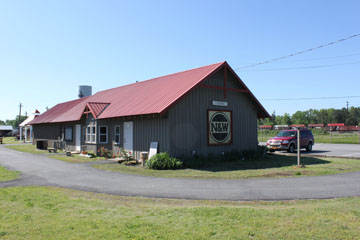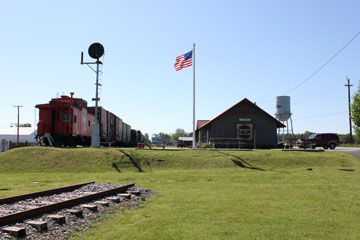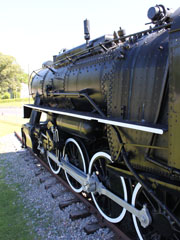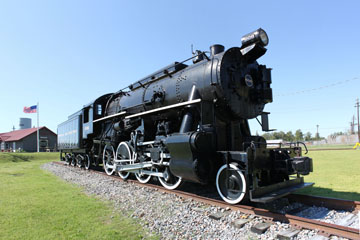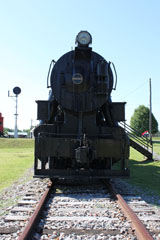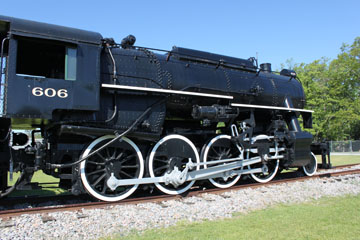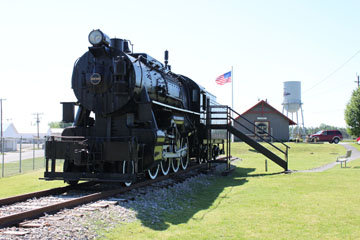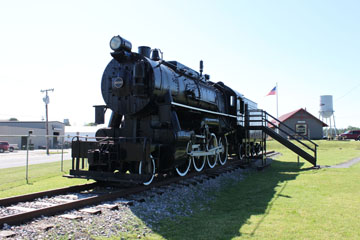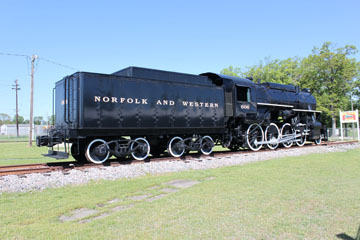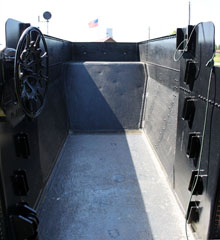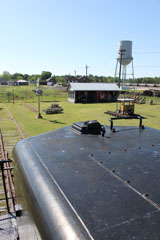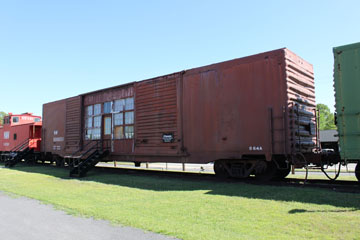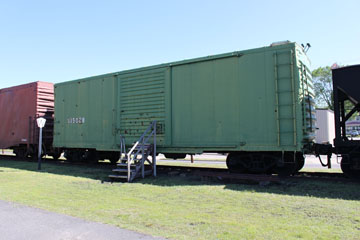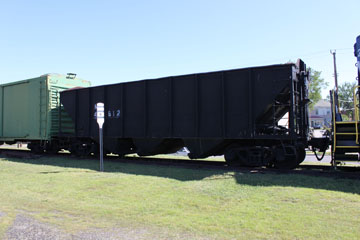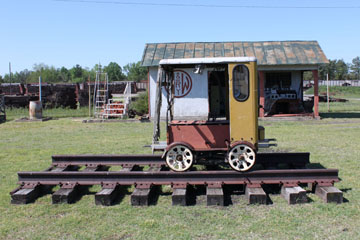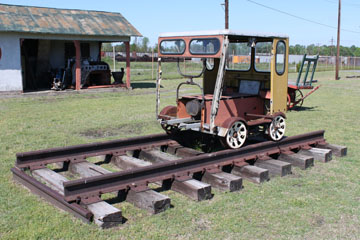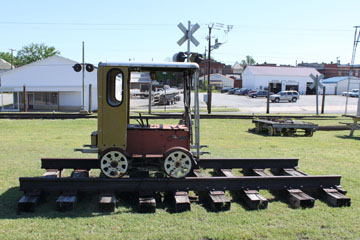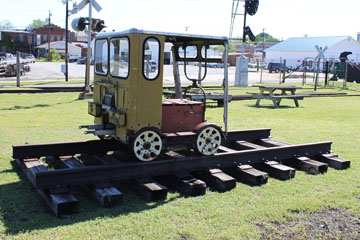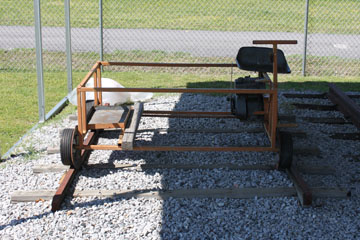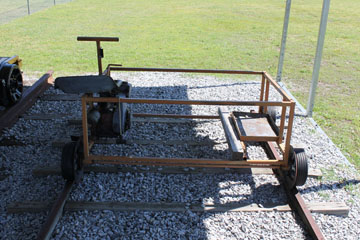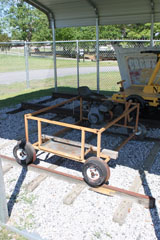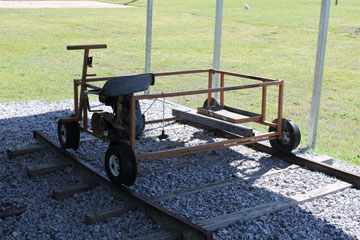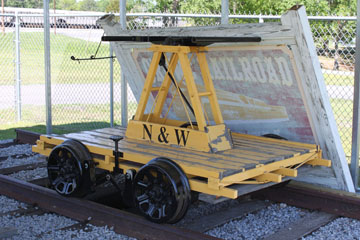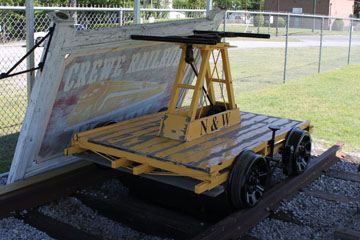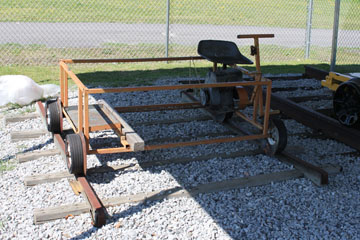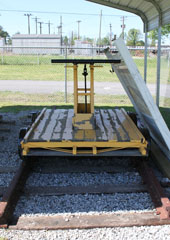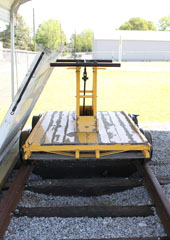

The entrance to the Crewe Railroad Museum in Crewe, Virginia (not to be confused with the museum of the same name in the United Kingdom) is off Meade St at the junction with E Virginia Ave/Highway 460 in downtown Crewe. The museum is open Fri-Sat 10.00-4.00 and Sunday 12.00-4.00.
It is housed in the town's ex-Norfolk & Western depot building.
The town of Crewe was founded in 1888 as a central location for Norfolk & Western's locomotive repair shops on its east-west route from the Appalachian coalfields to Hampton Roads, VA. It was named after Crewe in the UK, then the location of extensive locomotive construction works operated by the London & North Western Railway and now home to the Crewe Railway Museum.
As the N&W dieselised in the 1950s, the repair facility at Crewe went into decline, and little remains of it other than a relatively modern water tower. Norfolk Southern, successor to the Norfolk & Western, still maintains an office in the town, however, and you can sometimes see some interesting action passing through the local freight yard.

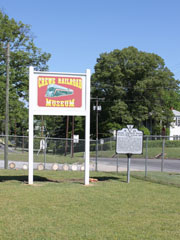
The museum has a relatively small collection, but visitors can climb up into the
cab of the steam locomotive, US #606, and the cab of N&W EMD diesel-electric GP7u #2185, as well as poking around NW C-31 Caboose #518501. There are also a number of maintenance of way vehicles on display.
In the station building, there are lots of historic pictures, a model of the original Crewe Roundhouse and various model steam
locomotives built by Al Gerard of Washington, NC. There is also a large model train layout by
Ron Timma of Jetersville, VA.

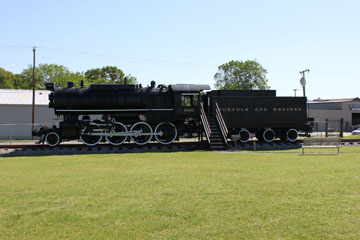
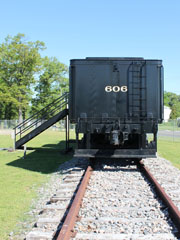

This Consolidation type (2-8-0) locomotive is one of two thousand, one hundred and twenty built for heavy freight work in Europe during WWII. The S160 design created by Major J. W. Marsh of the Railway Branch of the Corps of Engineers drew from previous austerity designs and used methods that delivered fast construction.
Alco built seven hundred and fifty-five S160s, Baldwin seven hundred and twelve and Lima six hundred and fifty-three. The locomotives eventually worked on railroads across the world, including Africa, Asia, all of Europe and South America.
The S160s were designed to be built quickly and efficiently, not for long term operations (they had an estimated operating life of ninety days before requiring major overhaul), and design compromises caused some problems. For example, the axle box grease lubricators were not as efficient as needed, particularly when maintenance was delayed for operational war reasons. As a result, axle boxes often ran hot.
Braking was also poor by European standards, with a considerable distance from the driver's brake valve to the Westinghouse steam cylinder.
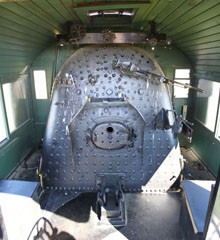
A coal burner built by the
Lima Locomotive Works in 1945, #606 has a 41 sq ft grate and 128 sq ft firebox. With 2,236 sq ft of heating surface, including 471 sq ft superheating, it operated at a boiler pressure of 225 psi. The cylinders are 19" x 26" and the drivers are 57" in diameter. Weighing 140,000 lbs on its drivers, it delivered 31,493 lbs tractive effort.
Relatively weak crown stays were another fault with the S160s. Coupled with a single, somewhat unreliable water gauge prone to blockage, the crown stay bolts collapsed with little warning when the water level was low. In just ten months, the crowns of three S160s collapsed in the UK, the first leading to the death of a Great Western fireman in November 1943.
#606's tender weighs 115,000 lbs with capacity for 9 tons of coal and 6,500 gallons of water. Note the coal bunker inset above the water tank to improve visibility when running backwards.
The locomotive design was derived from the British War Department's heavy freight "Austerity" 2-8-0, introduced for war service in 1943.

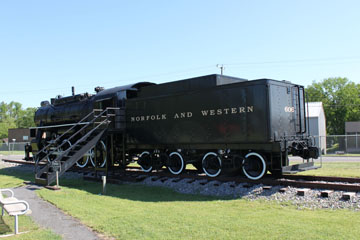
#606 spent its life on the thirty-one mile Fort Eustis Military Railroad within the boundaries of the US Army Transportation Center at Fort Eustis, VA. The railroad provides operational and maintenance training to Army personnel, as well as transport within the post and interchanges with the main railroad system at Lee Hall, VA.
Built as #5846, in 1952 the locomotive was renumbered #606. In 1971, it was donated to the City of Clifton Forge, VA., and was then at the US Army Transportation Museum in Fort Eustis, VA, until being donated to the museum at Crewe.

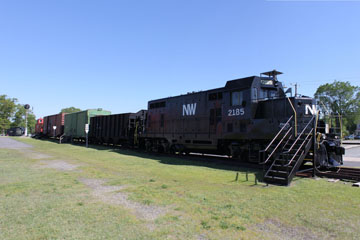
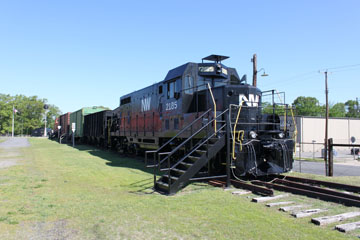

This unit was built as a GP7 by EMD in 1952 for the AT&SF and numbered #2739. At some stage, it was rebuilt as a GP7U.
The AT&SF ordered two hundred and forty-four GP7s (#2650-#2893), and was the only railroad to acquire cabless B units (five units: #2788A-#2792A). Many AT&SF GP7s were later sold to other railroads. #2739 went to the Georgia Southwestern, where it was renumbered #2185 and then to the Virginia Southern. After being acquired by the Crewe Railroad Museum, it was repainted in the Norfolk & Western livery.
Extremely versatile, GP7s hauled freight and passenger services, as well as operating as switchers. An EMD 567B 16 cylinder prime mover powered a GM D12 genarator to drive four GM D27B traction motors.
You can see another modified GP7, CNW GP7R #4160 on the Illinois Railway Museum Yard page of this website. ACL GP7 #1804 is on the Gold Coast Railroad Museum page, BO GP7 #6405 on the B&O Museum Yard and Car Shop page and CO GP7 #5828 on the Virginia Museum of Transportation page.

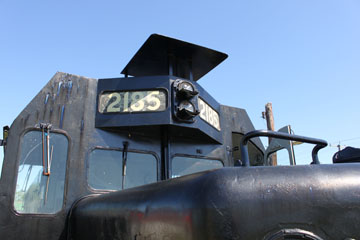

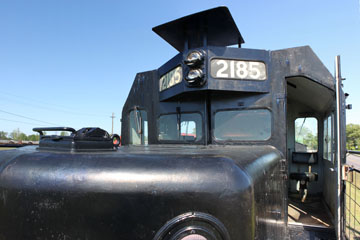
Above, photos of
#2185's cab and low hood. GP7s were
actually designed for both road work and switching, and the low hood units provided better visibility for the engineer.
On the right, some photos taken inside #2185's cab.
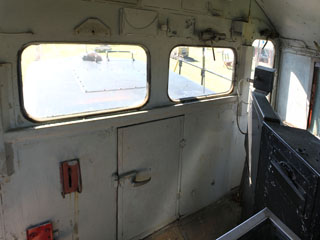

#2185 is on display with NW
C-31 Caboose #518501, NW Box Car #600651, NW Box Car
#515028 and NW Open Hopper #41812.
When I visited, you could go inside the caboose and view
more exhibits. Work appeared to have started on preparing
#600651 to hold further displays, but the other cars were not accessible.





